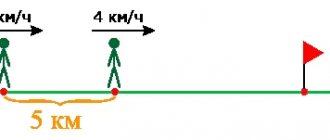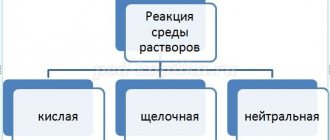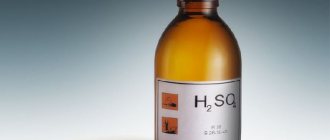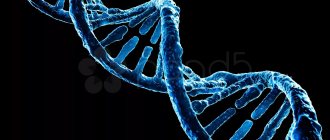Lesson summary for grade 9 “Rate of chemical reactions. Factors influencing the speed of reactions"
The rate of chemical reactions. Factors influencing the speed of reactions. 9th grade
Lesson-research.
Activity goal:
mastering research methods, developing the ability to independently construct and apply new knowledge.
Content goal:
studying the concept of “reaction speed”, factors influencing speed.
Equipment: computers, “Virtual Laboratory” disk, micro laboratories for students, hot water, a device for heating test tubes, lithium chloride, sucrose, electronic presentation.
Content:
Call stage.
Defining a theme
Let's start the lesson with a smile. I have prepared some animated images for you.
Why do you think the pictures are animated and how do the depicted objects differ? Determine how they can be related to chemistry and what topic we will study today. (Speed. Speed of reactions) What is speed? By the way, the word “speed” appears very often in the Guinness Book of Records: the speed record for typing on a computer is 158 words/min, the speed of bricklaying is 14 bricks/min. If you want, you will find other examples. But speed is always the number of actions per unit of time.
What is speed in chemistry? What is the rate of chemical reactions? (assume).
There are reactions that occur very quickly, almost instantly, and reactions that occur slowly. Experiment (precipitation formation). But the rusting reaction is slow and if we try to start this experiment, we will have to wait several days for the results. Some chemical reactions are constantly happening around us and inside us: in the kitchen, in the body, in the laboratory, in production. We would like to speed up some reactions, slow down others. How to do it? What determines the speed of reactions?
Which acid will remove rust faster?
Stage 2 – comprehension.
What don't you know to make sure your answers are correct? (What is the speed of a reaction and how to change it; After conducting research work, you will propose different ways to speed up various reactions. And now you will do research work to find out what and how affects the speed of reactions. Some of you will work in a virtual laboratory, the rest are in real life.
A group of theorists (4 people from No. 1-4) are studying the concept of speed. Formulas for determining the rate of reactions. (The text was compiled by the teacher) write out the definition, formulas, answer the question: “In order for some particles to react, they must collide. However, calculated data show that in gases the frequency of collisions is several billion per second, that is, all reactions should occur instantly, but this is not the case, because the particles must have a certain amount of energy, which is called activation energy. Activation energy is an energy barrier. What would happen if this barrier did not exist?
Recent documents: Physical education lesson summary “Development of physical abilities through outdoor games and relay races”
Tasks for working in the virtual laboratory:
No. 2 (2 people No. 1, No. 2) Dependence of speed on the catalyst.
Path - virtual laboratory - last name - password (13) - input - chemical reactions - reaction rates - dependence of the rate on the catalyst.
No. 3 (4 people No. 1-4) Dependence of speed on temperature.
Path - virtual laboratory - last name - password (13) - input - chemical reactions - reaction rate - dependence of speed on temperature
No. 4 (2 people No. 1-2) Dependence of speed on the concentration of substances.
Path - virtual laboratory - last name - password (13) - input - chemical reactions - reaction speed - dependence of speed on the concentration of substances.
No. 5 (2 people No. 1-2) Dependence of speed on the contact surface of reacting substances.
Path - virtual laboratory - last name - password (13) - input - chemical reactions - speed of reactions - dependence of speed on the contact surface of the reacting substances.
No. 6 (2 people No. 1-2) Dependence of speed on the nature of the reacting substances.
Path - virtual laboratory - last name - password (13) - input - chemical reactions - reaction speed - dependence of speed on the nature of the reacting substances.
Tasks for working in a real laboratory:
No. 2 (2 people No. 3, No. 4) Dependence of speed on the catalyst.
Try to set fire to a piece of sugar. Then place a lithium salt (catalyst) on it and try to set it on fire again. Draw a conclusion about the effect of the catalyst. Write down the equation for the combustion reaction of sugar (C12H22O11).
No. 4 (2 people No. 3-4) Dependence of speed on the concentration of substances.
Pour HCl solution into 3 test tubes. In the 1st - 3 ml, in the second - 2 ml, in the 1st - 1 ml.
Then add water to the 2nd and 3rd test tubes to 3 ml. The HCl concentration will decrease from the first test tube to the third. Drop one Zn granule into each test tube. Pay attention to the rate of gas evolution. Draw a conclusion about the effect of concentration on the reaction rate.
No. 5 (2 people No. 3-4) Dependence of speed on the contact surface of reacting substances.
Pour 2 ml HCl into two test tubes. Place a zinc granule in one of them, and powder in the other. Add the powder using a glass tube. Pay attention to the rate of gas evolution. Draw a conclusion about the effect of the surface area of contact of substances on the reaction rate.
No. 6 (2 people No. 3-4) Dependence of the reaction rate on the nature of the reacting substances.
Pour 2 ml of HCl solution into 3 test tubes. Place a Zn granule in one of them, Mg in the second, and Fe in the third. (Which metal has the metallic properties to the greatest extent?) Pay attention to the rate of gas evolution. Draw a conclusion about the influence of the nature of the reacting substances on the reaction rate.
Recent documents: Lesson summary in Computer Science “General information about the Microsoft Word word processor” 6th grade
Students are transferred according to number into 4 groups. Discuss the results.
So what is reaction rate and how can you speed up and slow down a reaction?
So, you already know a lot about what determines the speed of a reaction.
Summarizing:
I offer you one drawing. Each group offers its own caption for the drawing, based on the experiments done. Explain results and images.
HCl and Mg HCl and Fe
HCl and Mg CH3COOH and Mg, etc.
Now let's look at the question from a practical point of view:
Tell me, why do we need a refrigerator at home? (From the point of view of a biologist and from the point of view of a chemist)?
Which coal burns better: large pieces, small ones, or coal crushed to dust?
Why, in laboratory conditions, to carry out the reaction of sucrose hydrolysis, the solution must be boiled, but in the digestive tract this reaction occurs at t 36.6 and much faster? Presence of enzymes (organic catalysts)
You need to obtain zinc chloride using zinc and hydrochloric acid. What can be done to make the reaction go faster?
Let's hear the answers.
Express test
- The dissolution reaction of magnesium in hydrochloric acid will accelerate with increasing acid concentration
- The dissolution reaction of magnesium in hydrochloric acid will accelerate when the acid is diluted
- Between copper oxide and sulfuric acid will slow down when heated.
- The combustion reaction of coal accelerates when it is crushed
- The burning rate of hydrogen does not depend on the contact surface area
- Changing the temperature does not affect the rate of reaction between gases.
Speed of chemical reactions Development of a lesson in chemistry, grade 11. - presentation
Speed of chemical reactions Development of a lesson in chemistry, grade 11
Lesson motto: Susceptibility to change is the lot of all living things. Nicola Boileau.
What is a chemical reaction? What types of chemical reactions are you already familiar with? What other ways to classify chemical reactions do you know? Give examples. Why do some reactions occur instantly, while the results of other reactions take years to wait? Give examples of such reactions.
What is the rate of a chemical reaction? What is the significance of this concept for chemical production? Purpose of the lesson: To study the concept of the rate of a chemical reaction, as well as the conditions under which it can be increased.
Definition: The rate of a chemical reaction is the change in the amount of reactant per unit time per unit volume. r – rate of chemical reaction, V – volume m 3, v – amount of substance in moles, – time period sec., C – molar concentration (v/ V)
Explanation: In other words, the rate of a reaction is the change in the concentration of one of the reactants per unit time. In the reaction: N 2 + 3H 2 = 2NH 3, 1 mol N 2 reacts with 3 mol H 2 and 2 mol NH 3 is obtained. Thus, the rate of a chemical reaction can be calculated for any participant in the reaction based on the coefficients of the reaction equation
Working with a book. Read § 15 Page. Answer the question: What determines the rate of a chemical reaction? Work in groups using cards. Performing laboratory experiments.
Reaction rate, factors: Factor of internal chemical bonds: The nature of the reacting substances (strength of chemical bonds in the substance) def: a chemical reaction is the process of redistribution of chemical bonds between atoms, as a result of which new substances are formed. The stronger the internal chemical bonds in a substance, the more difficult it is to react.
Reaction rate, factors: Temperature factor (activation energy): def: Activation energy is the energy of the intermediate state, above which the total energy of the reacting particles is greater than the energy of the reagents that have not yet reacted. In the intermediate state, old chemical bonds have already been broken, and new ones have not yet been formed. For reactions occurring at degrees Kelvin, the van't Hoff rule is satisfied: with an increase in temperature by 10 degrees, the reaction rate increases by 2-4 times.
Reaction rate, factors: Van't Hoff's rule: Here r T 2 and r T 1 are the reaction rates, respectively, at temperatures T 2 and T 1 Van't Hoff coefficient (or temperature coefficient of reaction rate) Each chemical reaction has its own.
Reaction rate, factors: Catalyst factor: def: A catalyst is an intermediate reagent that reduces the activation energy of a chemical reaction due to the formation of intermediate compounds with less energy consumption. def: A catalyst substance or external influence (for example, ultrasound or ionizing radiation) that accelerates various chemical and physical processes (for example, polymerization) in a given direction. The main function of a catalyst is to form more reactive intermediate compounds and complexes with starting substances, which make it possible to reduce the activation energy of a chemical reaction.
Reaction rate, factors: Inhibitor factor: def: Inhibitor is a substance that slows down or prevents the course of various chemical reactions: oxidation, polymerization, corrosion of metals, etc. For example, hydroquinone is an inhibitor of benzaldehyde oxidation; technetium compounds are a steel corrosion inhibitor. The main function of the inhibitor is to form less reactive intermediate compounds and complexes with the starting substances, which allow increasing the activation energy of the chemical reaction.
Reaction rate, factors: Concentration Factor (Law of Mass Action) def: The Law of Mass Action establishes the relationship between the masses of reactants in chemical reactions at equilibrium. The law of mass action was formulated in K. Guldberg and P. Waage. According to this law, the rate at which substances react with each other depends on their concentration. The law of mass action is used in various calculations of chemical processes. It makes it possible to solve the question in which direction the spontaneous course of the reaction under consideration is possible at a given ratio of the concentrations of the reacting substances, what yield of the desired product can be obtained.
Reaction rate, factors: Concentration Factor (Law of mass action) def: Equilibrium constant - a constant value obtained from the ratio of the product of the concentrations of reaction products (in powers of their coefficients in the reaction equation) to the product of concentrations of reactants (also in powers of their coefficients in the reaction equation) . This constant does not depend on the initial concentrations of substances and the reaction mixture. Example:
Reaction rate, factors: Factor is the contact surface of the reacting substances. The smaller the solid particles, the larger the contact surface of the reacting substances, the greater the rate of the chemical reaction. Because the reaction occurs only at the point of contact of substances if they form a heterogeneous system.
Reaction rate, conclusion: So: the rate of a chemical reaction is defined as the change in the molar concentration of one of the reacting substances per unit time. The rate of a chemical reaction is always positive. Factors influencing the reaction rate: a) strength of internal chemical bonds b) temperature c) catalysts d) inhibitors e) concentration
The reason for the increase in the reaction rate with increasing concentration of substances is: 1) an increase in the number of collisions of molecules; 2)increasing the activation energy of the process; 3)increasing the energy of molecules; 4) an increase in the mass or volume of a substance.
Under normal conditions, the reaction at the lowest rate occurs between: 1) Fe and O 2; 2) Na and O 2; 3) CaCO 3 and HCl solution 4) Na 2 SO 4 solution and BaCl 2 solution
Rate of chemical reaction: Al(OH) 3 (solid) +3H =Al +3H 2 O Does not depend on: 1) The nature of the acid taken; 2)Concentration of aluminum ions; 3) temperature; 4)Concentration of hydrogen ions; 3++
The rate of the chemical reaction of sulfur oxide(4) oxidation decreases when: 1) using a catalyst; 2) lowering the temperature; 3)increasing oxygen concentration; 4)increasing pressure.
If the temperature coefficient of a chemical reaction is 2, then when the temperature increases from 20° to 50°, the reaction rate: 1) increases 8 times; 2) decreases by 4 times; 3) decreases by 2 times; 4)increases 6 times.
Homework §15
Summary of a chemistry lesson in grade 11 on the topic “Rate of chemical reactions” + presentation
Chemistry lesson in 11th grade on the topic: “Rate of chemical reactions”
Target
:
Build and expand knowledge about the rate of chemical
reactions.
Tasks:
- Educational:
update the concept of the rate of chemical reactions and its units of measurement, consider the influence on the reaction rate of the following factors: the nature of the reactants, their concentration, contact area, temperature, catalyst.
- Developmental:
development of skills and abilities to work in a group; mutual control, the ability to analyze, compare, and draw conclusions.
- Educational:
cultivate a culture of chemical experimentation, oral and written speech; continue the formation of general cultural skills.
Equipment:
PC, projector, interactive whiteboard, chemical glassware and equipment for setting up an experiment, computer presentation on the topic of the lesson.
Lesson
progress Organic moment.
- Updating
knowledge. Problem conversation.
1. Please remember the definition of speed from the course in physics and mathematics.
2. Please tell me what symbol indicates “speed” in physics and mathematics?
3. Please remember what unit of measurement “speed” has in physics and mathematics?
II.
Studying new material
1. Introduction to the concept of speed of a chemical reaction, unit of measurement of speed, molar concentration.
The teacher updates the students’ subjective experience of the concept of “speed” from the physics and mathematics course. During updating, the teacher introduces the concept of “rate of a chemical reaction” and compares it with the content of the concept of “speed” known to the students, and the results of the comparison are recorded by the teacher on the board and by the students in their workbooks:
| Physics and mathematics | Chemistry (rate of chemical reactions) |
| Speed detection | |
| Speed designation | |
| Speed unit |
During the conversation, the practical significance of the material being studied is noted. It takes time for reaction products to form from starting materials. Some substances react quickly, others slowly. The rate of a chemical reaction can vary within very wide limits.
The teacher asks students to give examples of fast and slow reactions. For example, reactions take place very quickly in aqueous solutions, almost instantly; it took millions of years for coal and oil to form in the earth's crust; rusting of iron occurs slowly; Magnesium shavings burn very quickly.
Result: Thus
, a distinction is made between fast and slow reactions, as well as reactions that occur at a noticeable speed.
To determine the speed at which a chemical reaction occurs, you need to know: a) how much of the substance is formed or consumed; b) how long does this process take? c) in what volume does the reaction take place?
2. Practical and scientific significance of knowledge about the rates of chemical reactions
(message learner 2-3 min)
3. Chemical kinetics
Chemical
kinetics is
the science of the patterns of chemical reactions occurring over time.
The task of chemical kinetics is to predict the rate of a chemical reaction, as well as to clarify its dependence on the conditions of the process.
The conclusions of chemical kinetics help to create conditions that promote the acceleration or retardation of certain chemical processes.
If chemical reactions occur in a homogeneous medium, then the interaction of the reacting substances occurs throughout the entire volume. Such reactions are called homogeneous
.
If a reaction occurs between substances in different states of aggregation, then it takes place only on the surface of contact of the substances. Such reactions are called heterogeneous
. Students give examples of homogeneous and heterogeneous reactions.
4.Problem: What determines the rate of a chemical reaction?
The teacher explains that students, performing laboratory work, will find out experimentally the factors that influence the rate of chemical reactions. After a collective discussion of laboratory experiments, conclusions will be drawn about the dependence of the reaction rate.
Laboratory
work of schoolchildren on the proposed tasks (instruction card)
(Appendix 1)
Collective discussion of laboratory results
Notebook entry:
Factors
influencing the rate of a chemical reaction:
-
The nature of the reacting substances;
-Temperature (introduce the van’t-Hoff rule);
-Concentration
of reactants ;
—
Surface area of contact of reacting substances;
-Participation of the catalyst
(repeat the concept of a catalyst and introduce the concept of catalysis)
Activation of mental activity .
Listening to the Arabic parable “Eighteen Camels”
:
There once lived in the East a man who bred camels. He worked all his life, and when he grew old, he called his sons to him and said: “My children! I have become old and weak and will soon die. After my death, divide the remaining camels as I tell you. You, the eldest son, worked harder than anyone - take half of the camels for yourself. You, middle son, have just begun to help me - take the third part for yourself. And you, youngest, take the ninth part.” Time passed and the old man died. Then the sons decided to divide the inheritance as their father bequeathed to them. They drove the herd out into a large field, counted them, and it turned out that there were only seventeen camels in the herd. And it was impossible to divide them by 2, 3, or 9! No one knew what to do. The sons began to argue, and each offered his own solution. And they were already tired of arguing, but never came to a common decision. At this time, a traveler was riding past on his camel. Hearing shouting and arguing, he asked, “What happened?” And the sons told about their misfortune. The traveler got off the camel, let it into the herd and said: “Now divide the camels, as your father ordered.” And since there were 18 camels, the eldest son took half, that is, 9, the middle son took a third, that is, 6 camels, and the youngest son took a ninth, that is, two camels. And when they divided the herd in this way, one more camel remained in the field, because 9 + 6 + 2 equals 17. And the traveler sat on his camel and rode on.
What is
the role of the eighteenth camel? And what is the connection of this parable with the topic of our lesson?
5. Discussion
of catalysis and the mechanism of action of catalysts
follows the demonstration of the video lesson “Catalysts” (Appendix)
Fastening:
work with the scheme CATALYSTS AND INHIBITORS (Appendix 2)
6. Action of biological catalysts
To explain the action of biological catalysts, the following laboratory experiments are carried out:
- We place hydrogen peroxide in two test tubes, in the first we place a piece of boiled potato, in the other - potato juice. 2. Place hydrogen peroxide in two test tubes, place a piece of boiled carrot in the first, and carrot juice in the other.
Conclusion:
The rapid release of oxygen in the second test tubes shows the action of the catalase enzyme contained in plant and animal cells. During cooking, catalase is destroyed, so oxygen is not released in the first test tubes.
III .
Consolidation of new material.
In order to consolidate new material and summarize the lesson, the teacher distributes cards to students with multi-level tasks.
1.Task. Calculate the average rate of the reaction, scheme A
+ B - C
, if the initial concentration of substance
A
is 0.220
mol/l , and after 10 seconds it is 0.215 mol/l.
2.Task. How will the rate of a chemical reaction change when the system is cooled from 100°C to 50°C if the temperature coefficient of the rate of the chemical reaction is 2?
IV .
Summing up the lesson.
The teacher summarizes the lesson and thanks the students for their active participation.
5.
Homework : p.15 Exercises 4,7,11 p.136.
Used
Books.
1. Gabrielyan
O.S.
Chemistry 11th grade. A basic level of. – M.: Bustard, 2012.
2. Gabrielyan
O.S., G.G. Lysova, A.G. Vvedenskaya
, Teacher's Handbook. Chemistry 11th grade part 1. Moscow: - Bustard, 2006.
Internet resources:
https://festival.1september.ru/articles/635252/
- school-collection.edu.ru;
- infourok.ru



